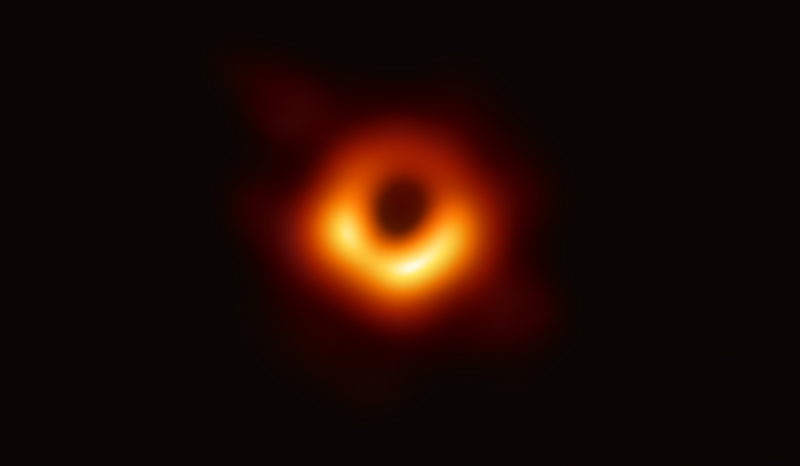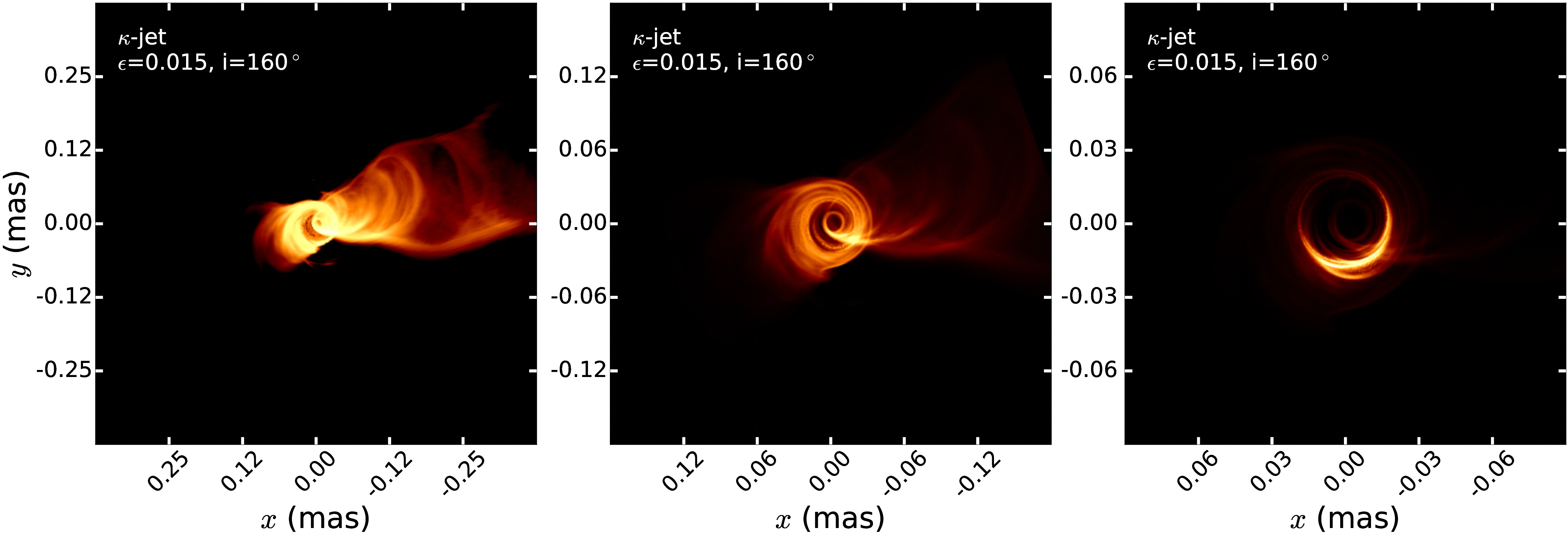Accretion
By studying accretion and outflows from compact objects, we learn about the most efficient energy source in the universe. I'm particularly interested in the formation, collimation and ultimately dissipation of relativistic jets which emanate from the direct vicinity of black holes across all mass ranges.
One of the most exciting observations in this field was the recent imaging of the black hole in the galaxy M87. Using Very Long Baseline Interferometry (VLBI) of high-frequency radio telescopes scattered across the globe, the Event Horizon Telescope Collaboration took this image.

Image credit: EHTC, CC BY-ND 4.0
Numerical simulations of turbulent accretion (with bhac among other codes) were combined with general relativistic ray-tracing to interpret the structure seen on the image: we witness the light emitted from hot plasma on its final orbits before plunging into the black hole. The dark region in the center is the so-called black hole shadow, a gravitationally lensed projection of the unstable photon orbit. Within the shadow area all light vanishes within the event horizon.
The galaxy M87 is also famous for its remarkable relativistic jet which is one of the best studied in astrophysics. Using high resolution 3D adaptive mesh refinement simulations with bhac, we have modeled the launching of the jet with unprecedented accuracy. Modeling the electrons within a kappa-distribution, we find that non-thermal particles are crucial to extend the spectrum beyond the radio band.

Relativistic ray-traced images of the simulated jet at three different radio frequencies: 43GHz (left), 86GHz (middle) and the EHT frequency of 230GHz (right). See the paper led by Jordy Davelaar for details.
17th Jun 2019; last edit 1st Sep 2019 by Oliver
tags: website, accretion